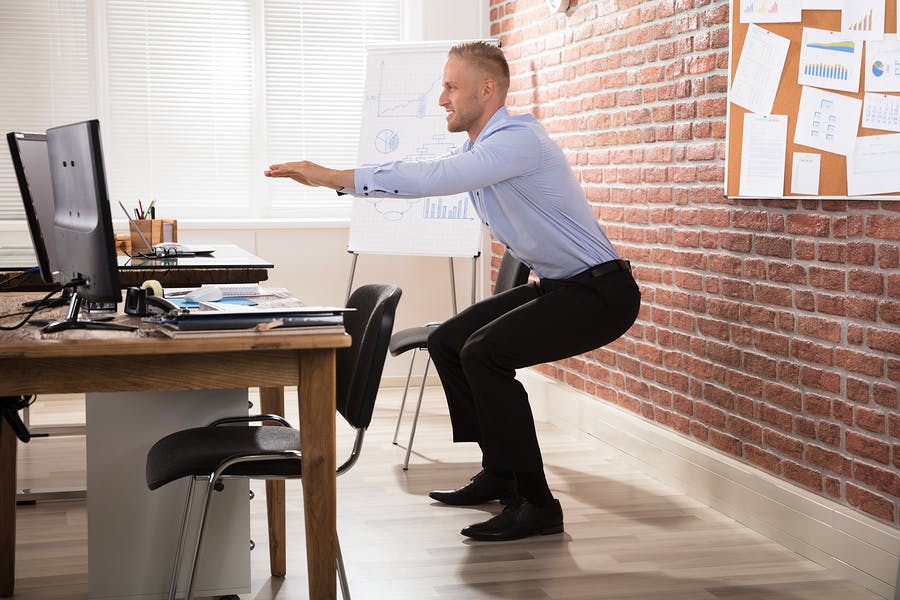It’s no secret: Over the last few years, corporate well-being programs have really come of age. Continued advances in technology and a renewed cultural interest in health and well-being are largely behind this big shift.
But, as I consider corporate well-being programs and what’s on the horizon for 2018 and beyond, I see a number of trends that I believe will continue to transform our industry, and trends that will allow HR professionals to fine-tune, or kick-start, their well-being programs in the next 3-5 years.
Here’s a look at five trends I’m watching closely in 2018.
1. The corporate vending machine makes a big splash
It might seem counter-intuitive, but 2018 will be the year we see corporate vending machines really take off. But wait, haven’t corporate vending machines been around for a while? And, haven’t they historically been full of unhealthy snacks and sodas? Correct, on both counts. As a side note, during a trip to a national theme park I saw vending machines for cupcakes!
But, the corporate vending machines of 2018 will be chock full of not only healthy food options like granola bars, craft popcorn, and trail mixes; they will also include a slew of products designed to facilitate a more healthy lifestyle. Think sleep, eye care and oral health products. What’s more, they’ll accept evolving payment options like ApplePay, Android Pay and employee debit cards.
In fact, you’re already seeing this trend in the consumer world as CVS is experimenting with vending machines filled with vitamins, supplements, First Aid and healthy snacks.
2. Standing desks no longer just a fad
2018 will be the year standing desks go from fad to fixture in the corporate workplace. All signals point that way. For example, research from the Society for Human Resource Management (SHRM) has called the standing desk the fastest growing employee benefit in the United States.
It’s hardly an accident. Consider today’s average office worker. Most are stuck at desks all day with minimal breaks and little exercise. In many ways, it’s a lifestyle that’s worse than smoking! Standing desks can help companies make headway in that regard by allowing employees to get just a little movement in their busy days.
Over the last few years, we’ve seen start-ups and midsized companies embrace this trend. But, 2018 will be the year we see larger companies adopt standing desks on a larger scale. Employees are asking for them, and the current cultural climate is pointing in that direction.
3. Personalization to the max
It’s clear that employees want more personalization from their corporate well-being programs. And, in the last year, we’ve seen more companies take on that challenge by using digital platforms, apps and wearable devices to meet employees’ preferences.
But, I believe what you’ll see in the next year will be more companies using “big (well-being) data” to customize well-being experiences for employees that sync up exactly with personal fitness and health goals. The deliverables will be more tailor-made content and specific content offerings based on employee interests — like on-site muay thai boxing or ballet barre classes, for example.
And, the way in which employees interact with these personalized offerings will evolve, too. For example, I envision employees attending personalized fitness classes at the corporate wellness center, but also participating in live coaching sessions on their mobile devices and interacting with virtual personal assistants to track progress and evaluate their health outcomes. The new corporate well-being experience isn’t just personalized—it’s cross-platform, too.
4. On-site nap rooms become “a thing”
Sleep deprivation is a serious issue in our society right now—and it’s impacting employee productivity in a big way. A RAND study estimates sleep deprivation is costing U.S. employers roughly $411 billion annually. Yikes.
As a result, I believe you’ll see more employers tackling sleep deprivation in the workplace through formal sleep awareness and education programs, as well as incentive programs that track an employee’s sleep and provide points towards rewards for achieving set sleep goals.
And yes, I believe we’ll also see more employers make room for on-site nap rooms and sleep pods, too, as ways to give employees a break and boost productivity.
5. Companies finally address employee stress
Workplace stress isn’t new. But, it is a big deal. The World Health Organization (WHO) recently called stress the health epidemic of the 21st century. In fact, one recent study found that work-related stress costs U.S. businesses $30 billion a year in lost workdays (some estimate it at $300 billion).
The idea of companies trying to help employees manage that stress isn’t necessarily new, either. However, in 2018, I believe you’ll see companies take a little different approach.
For instance, I believe you’ll see more companies turn to mindfulness for help. Why? Because mindfulness, in particular, has been said to boost creativity and sharpen focus — two things that employers are eager to retain in the “always-on” age.
Case in point: “The Balancing Act — Work, Life and Technology” is one of our top 10 most requested educational seminars for all our clients.
Other companies will turn to meditation. Through its CubeFit program, HP offers 10-15 minutes classes on meditation and yoga that are streamed live via Microsoft Lync or Skype so employees can recharge where, and when, they want.
Those are the big well-being trends I see in the year ahead. What about you? What trends do you see shaping the well-being space in 2018?
